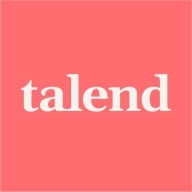

Pentaho Data Integration and Analytics and Talend Data Fabric are competitive solutions in the data integration and analytics sector. Pentaho generally has the upper hand in pricing and ease of deployment, while Talend is favored for its advanced features offering significant ROI for those with complex data needs.
Features: Pentaho offers extensive data integration capabilities and visual analysis tools, supporting seamless management. It is particularly noted for its comprehensive support for big data technologies and flexibility with multiple database connections. Talend stands out with its robust support for cloud integration and big data, emphasizing extensive scalability and advanced processing features, making it suitable for sophisticated requirements.
Room for Improvement:Pentaho could expand its cloud integration features and provide more out-of-the-box analytics functionalities. User feedback suggests improvement in its interface’s intuitiveness and enhancements in advanced analytics capabilities. Talend could benefit from streamlining their deployment process to reduce complexity. Additionally, offering more detailed initial guidance for users new to such comprehensive platforms would be beneficial.
Ease of Deployment and Customer Service:Pentaho provides a straightforward deployment process, bolstered by strong customer service, which simplifies setup and troubleshooting. Talend's deployment is more complex due to its feature density, but it compensates with thorough documentation and responsive support, assisting users in navigating complex configurations.
Pricing and ROI:Pentaho is known for its competitive pricing, offering substantial ROI for businesses looking for cost-effective solutions. Talend involves a higher initial setup cost but justifies this with its powerful capabilities, appealing to organizations requiring advanced data solutions. Enterprises with tighter budgets may lean towards Pentaho, while those prepared to invest more to leverage expansive features might opt for Talend.


Pentaho Data Integration stands as a versatile platform designed to cater to the data integration and analytics needs of organizations, regardless of their size. This powerful solution is the go-to choice for businesses seeking to seamlessly integrate data from diverse sources, including databases, files, and applications. Pentaho Data Integration facilitates the essential tasks of cleaning and transforming data, ensuring it's primed for meaningful analysis. With a wide array of tools for data mining, machine learning, and statistical analysis, Pentaho Data Integration empowers organizations to glean valuable insights from their data. What sets Pentaho Data Integration apart is its maturity and a vibrant community of users and developers, making it a reliable and cost-effective option. Pentaho Data Integration offers a range of features, including a comprehensive ETL toolkit, data cleaning and transformation capabilities, robust data analysis tools, and seamless deployment options for data integration and analytics solutions, making it a go-to solution for organizations seeking to harness the power of their data.
Talend, a leader in cloud data integration and data integrity, enables companies to transform by delivering trusted data at the speed of business.
Talend Data Fabric offers a single suite of apps that shorten the time to trusted data. Users can collect data across systems; govern it to ensure proper use, transform it into new formats and improve quality, and share it with internal and external stakeholders.
Over 3,000 global enterprise customers have chosen Talend to help them turn all their raw data into trusted data to make business decisions with confidence — including GE, HP Inc., and Domino’s.
We monitor all Data Integration reviews to prevent fraudulent reviews and keep review quality high. We do not post reviews by company employees or direct competitors. We validate each review for authenticity via cross-reference with LinkedIn, and personal follow-up with the reviewer when necessary.